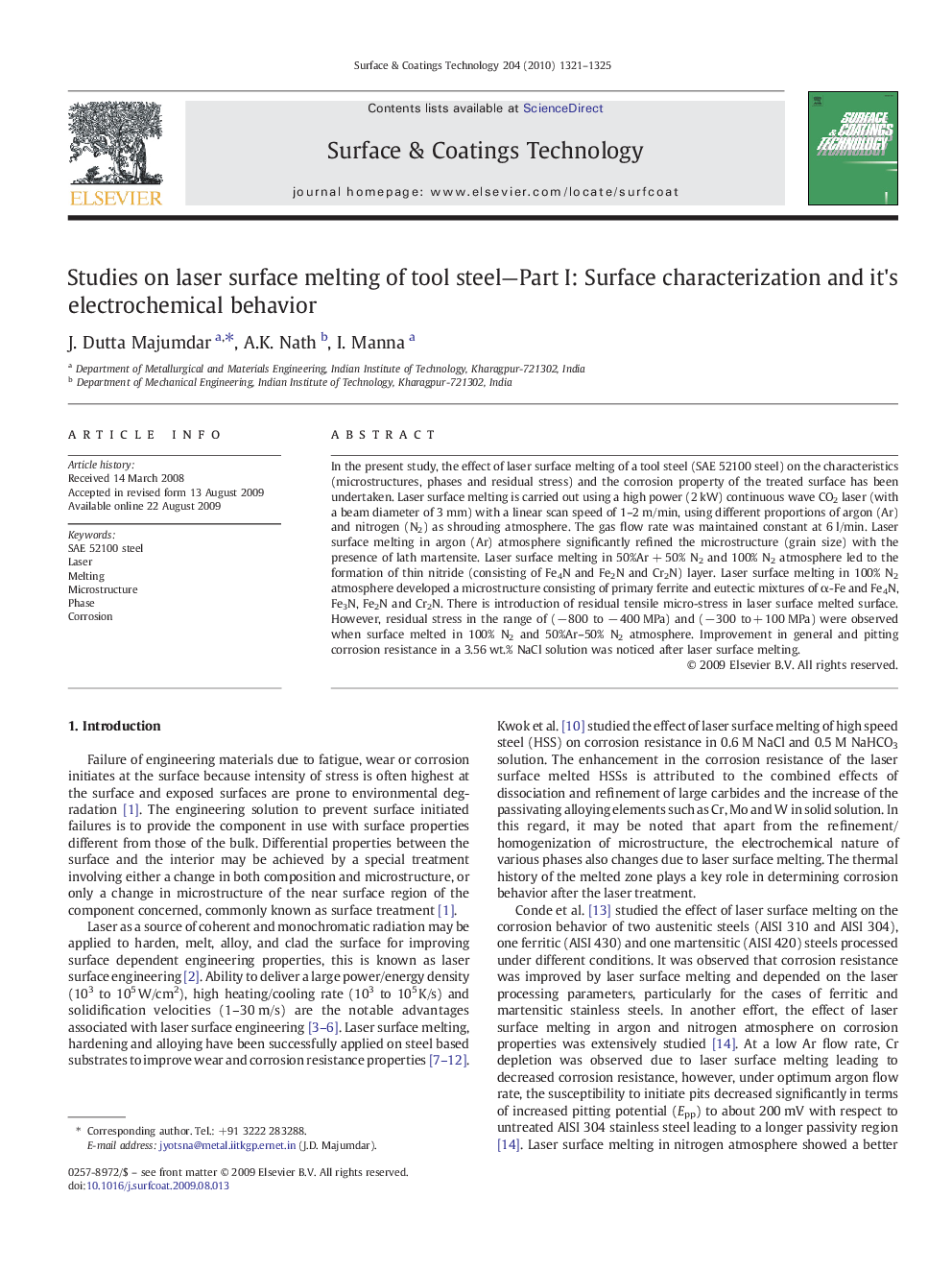| Article ID | Journal | Published Year | Pages | File Type |
|---|---|---|---|---|
| 1659723 | Surface and Coatings Technology | 2010 | 5 Pages |
In the present study, the effect of laser surface melting of a tool steel (SAE 52100 steel) on the characteristics (microstructures, phases and residual stress) and the corrosion property of the treated surface has been undertaken. Laser surface melting is carried out using a high power (2 kW) continuous wave CO2 laser (with a beam diameter of 3 mm) with a linear scan speed of 1–2 m/min, using different proportions of argon (Ar) and nitrogen (N2) as shrouding atmosphere. The gas flow rate was maintained constant at 6 l/min. Laser surface melting in argon (Ar) atmosphere significantly refined the microstructure (grain size) with the presence of lath martensite. Laser surface melting in 50%Ar + 50% N2 and 100% N2 atmosphere led to the formation of thin nitride (consisting of Fe4N and Fe2N and Cr2N) layer. Laser surface melting in 100% N2 atmosphere developed a microstructure consisting of primary ferrite and eutectic mixtures of α-Fe and Fe4N, Fe3N, Fe2N and Cr2N. There is introduction of residual tensile micro-stress in laser surface melted surface. However, residual stress in the range of (− 800 to − 400 MPa) and (− 300 to + 100 MPa) were observed when surface melted in 100% N2 and 50%Ar–50% N2 atmosphere. Improvement in general and pitting corrosion resistance in a 3.56 wt.% NaCl solution was noticed after laser surface melting.
